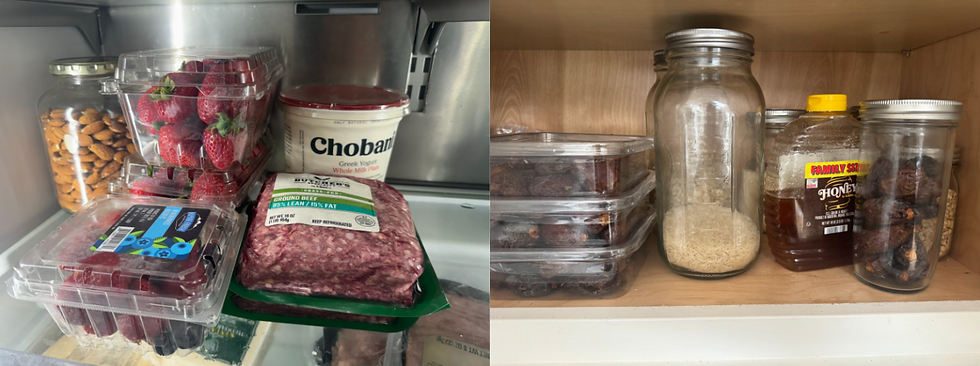Teenage Son Can't Gain Weight? Read This…
- Evan Harris
- Jun 13
- 4 min read
Updated: Jun 19

It’s a timeless problem. He’s tried stuffing his face with leftovers. He’s devoured protein shakes. Maybe he’s even tried those mass gainer shakes that promise to have him putting on weight with ease. But the reading on the scale just won’t seem to budge.
If that sounds anything like your son’s current loop, I think you’ll find this piece very helpful.
Between going from skinny to fit myself and running a teen fitness mentorship program, I’ve learned a thing or two about what it takes to put on weight in a healthy and sustainable manner.
And I’d like to share what I’ve learned with you so your son can start crushing those fitness goals today.
Three Tips to Help Your Son Crush His Weight Gain Goals
1. Start with why.
The first question I ask each of my mentees on our very first call is “what is your why?” I often get an answer such as “I just want to get stronger.” This is a good start, but we want to dig even deeper. For example, “I want to get bigger and stronger so I can improve at my sport, and because I know how amazing it feels to push myself” would be a perfect answer.
It’s crucial to have a strong why to refer back to when motivation is low.

It’s also completely fine if weight gain just isn’t that important of a goal. I recently had a conversation with a mentee who’s been getting stronger and improving his cardio while having a blast during his workouts. But, he’s been struggling to find motivation to get in those extra snacks and meals.
So we revisited his why and realized he didn’t care as much about putting on weight as he did when we first started working together, which is fine!
The takeaway: When talking with your son about how you can support his fitness goals, let’s first honestly assess whether he truly cares about putting on weight.
If the answer is no, that’s completely fine (though what constitutes a healthy weight range for a kid his age is a conversation to be had with a pediatrician).
2. Find easy-to-prepare calorie dense meals.
Now, let’s get into the actual implementation. While eating twice as much dinner or downing a massive protein shake for dessert can work for some, a lot of kids just don’t have the appetite to consume that much food in one sitting.
The solution: add one to two calorie-dense meals (ideally 800 calories or more) at whatever time of day is easiest. I’ve found that most of my mentees prefer including an extra meal after arriving home from school.
Here are my favorite fridge and pantry staples:
Full fat dairy
Red meat
Nuts
Dates
Peanut butter
Avocados
Olive oil
The takeaway: Come up with one or two easy-to-prep high calorie “in-betweener” meals and load up on the ingredients.

3. Focus on one thing at a time.
At this point, you hopefully have a pretty good idea of what type of foods your son should be eating and how to help him incorporate these foods into his daily routine.
But what about burnout? How do we ensure we’re able to stick to these habits for months and years? To answer this question, let’s take a look into a conversation I had with one of my mentees a few months back.
Within our first couple sessions, we decided he’d need to incorporate two to three calorie dense snacks each day. But, a few weeks later, he complained that his appetite wasn’t quite big enough.
He suggested we tone it back and simply add an extra snack each week so he could slowly adjust to the new routine.
About a month or so later, he was putting on muscle and gaining strength without the stress he previously experienced.

This was a pivotal learning moment for me as a mentor. It showed me that, while it may be tempting to want to go “all in” on changing one’s eating habits, changing one thing at a time is often a much more sustainable approach to drive long term progress.
The takeaway: Let’s focus on adding one new eating habit at a time. Once that habit sticks, we can add another.
For example, we might start by simply eating a couple protein bars throughout the school day. Once that becomes second nature, we can add an extra meal after school or include a yogurt bowl as a healthy dessert.
If you found this article helpful and want to see more content like this, click here to connect with me on IG or click here to subscribe to my email list and I’ll reach out whenever I release a new post.
Interested in helping your son crush his fitness goals while enjoying the journey through 1-on-1 mentorship? Click here to learn more.


Comentarios